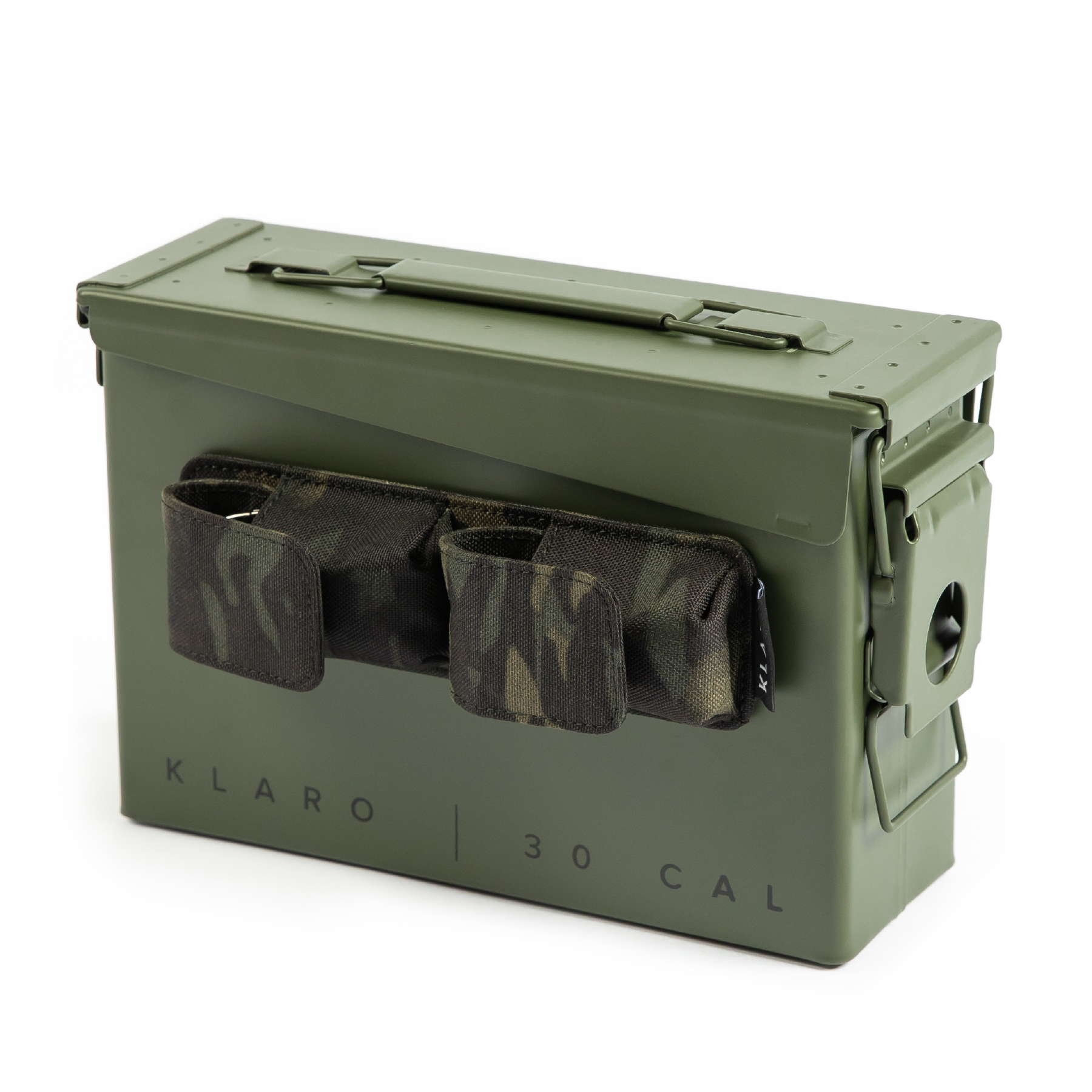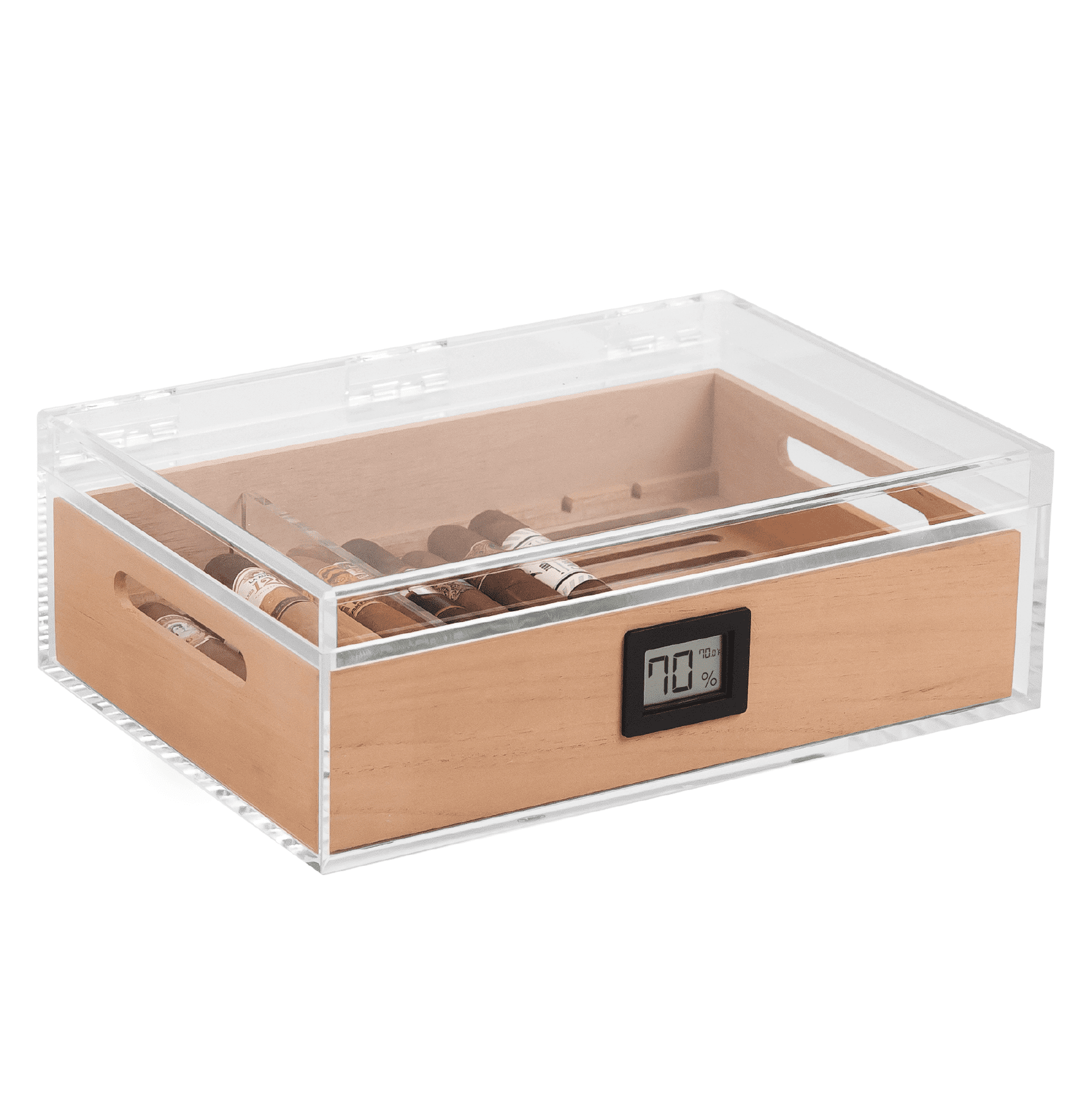Even if you’re new to the world of cigars, you’ve probably heard of—or had other cigar enthusiasts mention to you—a humidor. But what is it?
Like any hobby, cigar appreciation is simple on the surface, but once you start to appreciate the finer elements of it, you’ll find there’s more to it. A humidor is just that. And if you’ve stepped into a store and bought your cigars from their humidor—don’t worry. We’re not talking about the giant room-sized humidors that are basically wine cellars for your stogies.
When it comes down to it, a humidor is a relatively simple, and some would argue very necessary, component of cigar appreciation. This article will dive deeper into what exactly a humidor is, how it works, and why they’re important to keep your cigars in excellent smoking condition.
What is a Humidor?
In theory, a humidor is simple. It’s a wooden box (or, in some extreme cases, a full room) that is designed to maintain a specific level of humidity and temperature that’s appropriate for your cigars. It is, specifically, the ideal way to store cigars.
Your prized cigars may be just fine for up to a couple of weeks at room temperature. Longer than that, and they'll start to deteriorate. Cigars are sensitive to temperature, humidity, and sunlight.

If you don’t protect them from the elements, they’ll wreak havoc on your stogies. In environments that are too dry, the tobacco inside will shrivel and lose much of the aroma that’s so appealing. That turns what should be a smooth and flavorful smoke into something bitter and acrid. In more humid environments, cigars can mold and rot—and you’re certainly not smoking that.
If you’re not smoking your cigars in a relatively quick timeframe, a humidor is a must. In fact, some may argue that ideal storage conditions can even make a cigar taste better with a little age.
How Does a Humidor Work?
A humidor is primarily made up of three key parts: a box of Spanish cedar, a hygrometer, and a humidification system.
A Hygrometer measures the humidity inside your humidor. On a small scale, the humidity inside a humidor may fluctuate some, but usually a scale between 67-72 percent is good.
Different humidors maintain humidity in different ways, but all of them use some kind of humidification system. Ours use a hydro tray—which is a dish that holds seasoning solution—and gel solution crystals, which ultimately allow the hydro tray to hold more water. The water, combined with the temperature inside the box, allows the box to absorb the liquid (which you’ll read about next). Then, as the box breathes, it’s able to help the humidity reach equilibrium inside, creating the ideal environment for cigars.
The box of a humidor is made of a special wood called Spanish cedar. It’s a type of wood with absorbent properties that makes it perfect for humidors. Again, different humidors employ Spanish cedar in different ways. Some include just a veneer of it inside, which isn’t ideal. Others, like Klaro humidors, incorporate a full lining to allow for plenty of absorption—meaning it’s not necessary to reseason frequently.
Spanish cedar does more than just help humidify your cigars. It also cuts down on the likelihood of mold and mildew, as well as reduces the risk of cigar beetle infestation. Some cigar aficionados suggest the wood helps impart a certain flavor to the stogies as well. And, if you’re familiar with the aroma of cedar, you know it’s desirable.
How Do I Keep My Humidor in Good Shape?
Maintaining your humidor isn’t just a set-it-and-forget-it situation. There’s basic upkeep—but nothing you should be overly concerned about. If you purchase a high-quality humidor and take care of it, it’s likely to last you your entire lifetime (and maybe into another person’s as well).
To keep your humidor in good shape—and an ideal environment for your cigars—it’s important to “season” it. Seasoning your humidor means allowing the Spanish cedar to absorb enough water that it maintains a particular level of humidity. LIke we mentioned before, every humidor has a different process for seasoning. Our Klaro humidors include everything you need to season it, as you can also join our Klaro Membership, which provides a year’s worth of materials.
Seasoning a Klaro humidor is a particular, but not complicated, process. While you may be tempted by the sponge method, which involves rubbing the interior lining of the humidor down with water, we’ve found that this can warp the wood and create an ill fit for the lid. You may also learn about other popular two-way humidification systems. While those are great for small travel humidors, they’re not a good option for a Klaro humidor.
When you’re seasoning a humidor, you’ll use our solution in a hydro tray and monitor the humidity levels over time with the hygrometer. On many Klaro humidors, the hygrometer is mounted on the front for easy viewing. Other humidors may have a separate hygrometer inside the case. Check out our Ultimate Guide to Seasoning Your Humidor to get the full, in-depth process.
Otherwise, you’ll want to monitor the humidity levels of your humidor every couple of weeks. Small humidors are difficult to dial into a single number, but a range between 67-72 percent is excellent. If you notice your humidor’s humidity levels getting higher or lower, you may want to remove the hydro tray for 12 hours and reassess the hygrometer.
It’s best to keep your humidor in a temperature controlled environment, away from areas with major heat swings. For example, it’s best kept inside your air conditioned/heated home than out in the garage. Also, it’s better kept in a basement or room with low light than in the sun room. Temperature, moisture, and sunlight are all elements that can be dangerous to cigars, and while your humidor will go a long way to combat them, you can help it do its job by placing it in the best conditions.
With that, you know what you need to know about what a humidor is, and how it fulfills its purpose. The next step is to choose your humidor. Here’s a helpful guide on how to do that.















